Artist Collection: Ethan Johns
Since his early childhood, Ethan Johns has been surrounded by some of the music world’s brightest lights. He’s gone on to become a highly regarded producer, working with the likes of Tom Jones, Ryan Adams and Paul McCartney. His guitar collection isn’t bad, either…
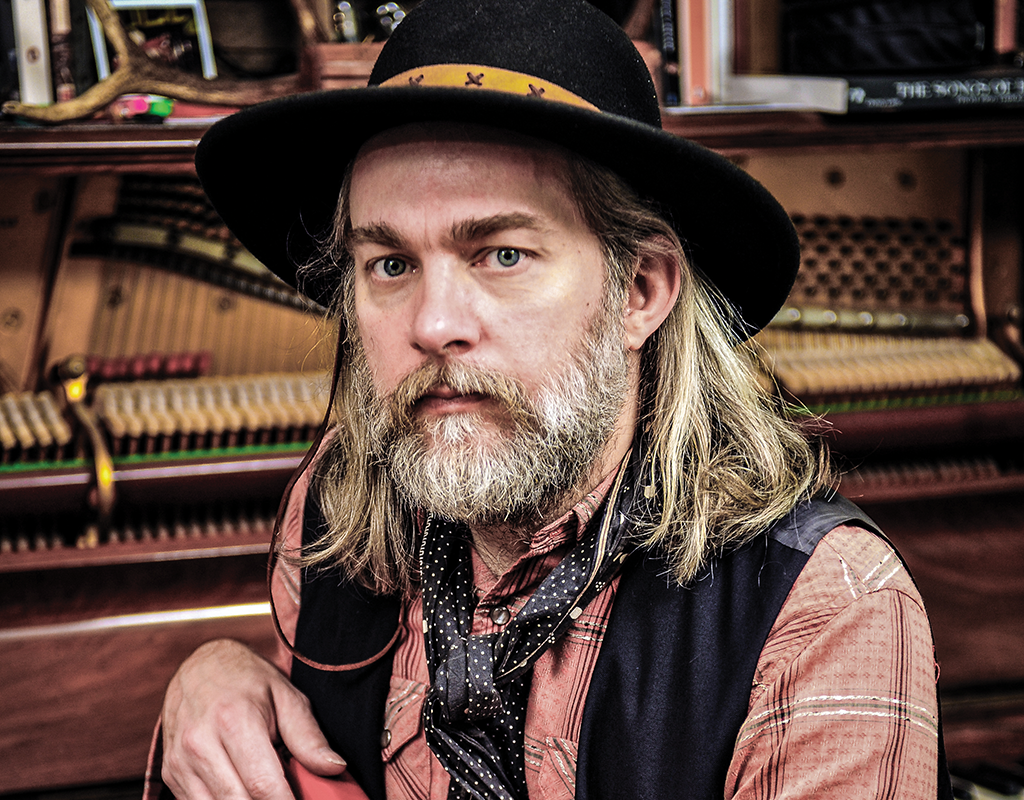
Photography Bob Hewitt, George Cheatle & Jennifer Johns
When people talk about ‘a lifetime in music’, few can envisage what it must be like to be surrounded – from a very early age – by the creation of some of the most memorable rock albums of all time.
Three-year-old Ethan Johns was not only aware of what was going on around him, he was absorbing it almost by osmosis, thanks to his record-producing father, the legendary Glyn Johns, and a host of rock ’n’ roll luminaries recording at his dad’s studio. The Rolling Stones, Led Zeppelin, The Eagles, Eric Clapton, The Who – the list goes on and on…
Awareness turned to hands-on interest, and Ethan learned all he could about the record-making business – as well as becoming a top-flight multi-instrumentalist and songwriter along the way.
There was no easy ride; Ethan came up through the ranks of the record engineering and producing world by starting at the bottom. His ability got him noticed, and soon he was working in studios in both the UK and the USA.
Ethan has worked worldwide with Ryan Adams, Ray LaMontagne, Laura Marling, Kings Of Leon, Paul McCartney, CSN, Emmylou Harris and The Jayhawks – to name a few. His work [both as a producer and musician] with Tom Jones has resulted in some of the finest music the Welshman has ever recorded.
Sir Tom told G&B: “Musically, Ethan is the most serious man I have ever worked with. What I mean is that he gives me and himself – and the band – space and time to create.
“He also knows when my voice rings true. In the quietest way, he brings about a self-awareness in everyone, so that sounds and expression and meaning can develop. Oh, and he has really nice hair!”
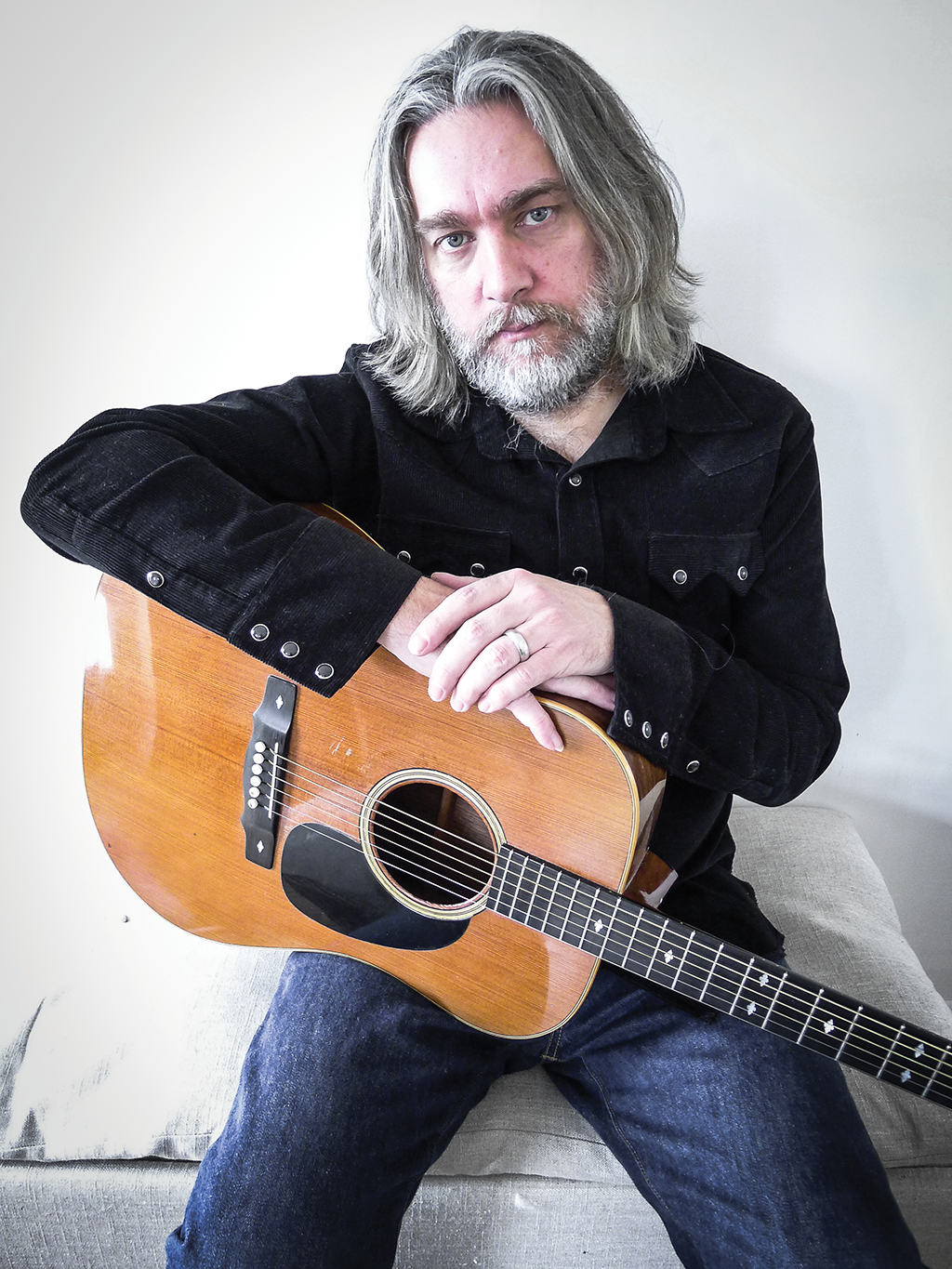
In his own right, Ethan has recorded three albums. The latest, Silver Liner, showcases a mix of organic British and Americana roots music, and highlights the talent of not only Johns, but also pedal-steel wizard BJ Cole, bassist Nick Pini, violinist Georgina Leach and drummer Jeremy Stacey – known collectively as The Black Eyed Dogs.
“There are some great guest appearances too, from long-time friend [former Eagle] Bernie Leadon and country music favourite Gillian Welch.
We chatted with Ethan at his West Country studio… and took a peek at some of his wonderful guitars.
Q. What was it like growing up in the Johns household?
“Well, there were musicians around – and I was obsessed by music from the age of about three, maybe four.
I had discovered my passion for music – and anyone who walked through the door, I was ‘on’ straight away, because I wanted to learn and explore more about the magic thing I had discovered!
“To me, these were just lovely guys and friends of my dad – no different to anyone else who had a friend or an uncle who was into music. But there were two guys in particular who I developed a relationship with from an early age; Andy Fairweather-Low and Bernie Leadon – both incredible guitar players, and both very good friends of the family to this day.
I was just really lucky to have access to some incredible world-class musicians. And I learned some fundamental lessons from these guys about tone: the sounds you make are coming from your hands, not the guitar you are playing.
I had this demonstrated to me by Eric Clapton. It was a key moment in my life, I was about 11 or 12 years old, and Eric was down at our house rehearsing for the Ronnie Lane ARMS Concert.
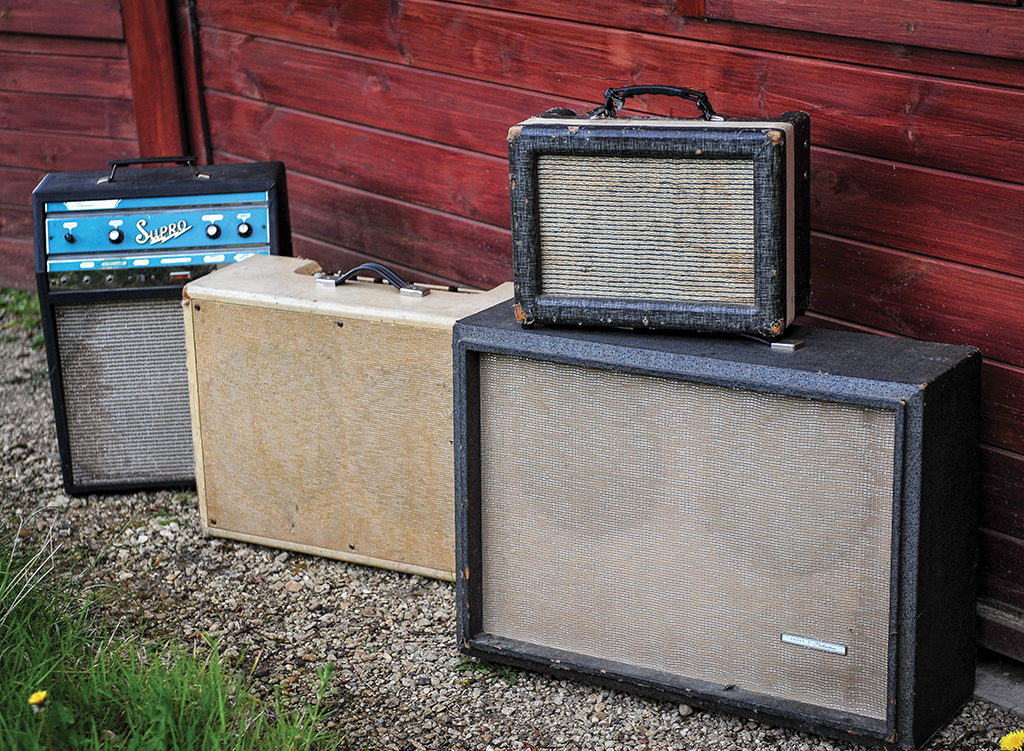
A 1960s Supro Corsica (left), just one of Ethan’s many vintage amps
I had just got my first serious amplifier – a Sessionette 75, which was quite complicated, and I was struggling with it a bit. I had a Strat, so I asked Eric if he would help me figure out what this amp did.
Eric very graciously said ‘Yes, of course’, and he picked up my guitar, switched on the amp… never touched the controls, but on that first note it was ‘instant Eric’.
It was a great sound, like a lightbulb moment. It’s in your fingers, man, not really anything to do with the guitar. I mean, ‘Blackie’ was a great guitar, but just the one he liked to play – he could play anything and sound like Eric Clapton.
“I was about 12 or 13, and I was really becoming aware of the pop culture and that whole thing. Up until then, it was sort of beautifully innocent. I’ve got great memories of going and hanging out at recording sessions, like when Bernie Leadon bought Neil Young’s house in Topanga Canyon.
“He made a record about 1974 to ’75 with my dad, out there in California. I was just mesmerised by the place, the atmosphere and the music being made, just soaking it all in!”
Q. When do you feel that you first associated with the musical direction that you would eventually take?
“Well, the first instrument that introduced me to music was the Appalachian dulcimer, and it was instant love. Then it was drums, and then guitar. I got my first guitar when I was five, but it was drums that dominated my time. I’d play guitar at night, in the dark when I went to bed!
“There was a Fender Rhodes keyboard in the hallway – and I used to mess around with that a bit. But when dad built the studio there was a Hammond B3 in there, and I would sit for hours on that thing, just listening to the Leslie speeding up and slowing down. Same thing with bass… I love playing bass, and I’ve played bass on a bunch of records, but I wouldn’t say I was a bass player.
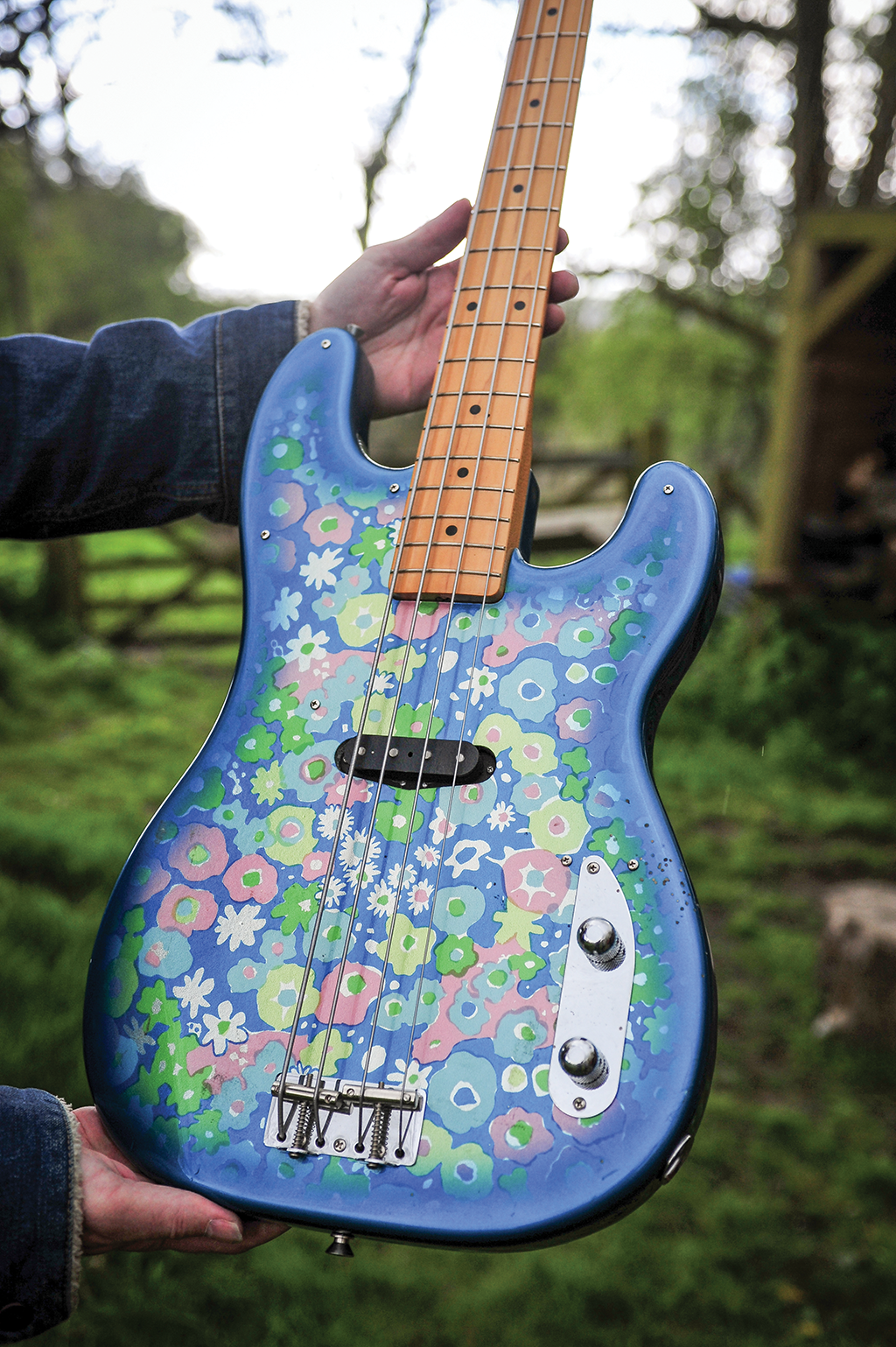
Ethan’s Blue Paisley Fender Precision Bass
“It’s difficult to detach one instrument from another in terms of what influences the other. There’s no doubt that I’m a better drummer because I’m a guitar player, and I’m definitely a better bass player because I’m a drummer.
“Tone chasing, for me, is about having the colours on the palette. Being able to instantly, and subconsciously, access the tone. That’s why valve amplifiers are so important to me, because they are incredibly expressive.
“The relationship between the musician and the amplifier – and, of course, all the different guitars, models and styles, will influence how you ‘push’ the sound out of the instrument and through the amplifier.
“If I’m making a recording, or I’m playing with the band or whatever, and I have a sound in my head that I want to create, I want to be able to get to that sound as quickly as possible.
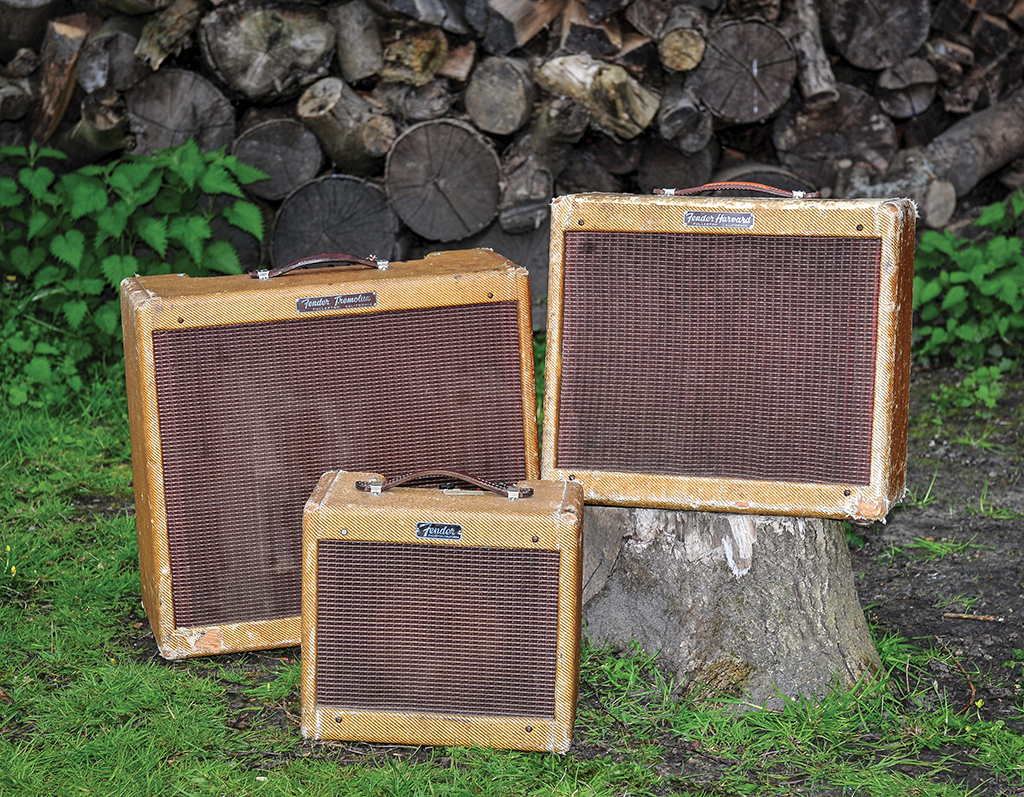
Ethan’s Fender tweed collection (l-r): Vibrolux, Champ and Harvard
“It will be like you imagine that sound in your head, and then you’ll say ‘okay, that’s the Selmer [amp] and the Jerry Jones…’ and (clicks fingers) you can go there immediately. That’s what I guess I mean by tone chasing.
“There’s no doubt that technology has its uses, but I have to say, from the point of view of design, I still find the amps from the 50s and 60s to be the most expressive to me, although Fender is making great new amplifiers again now. I’ve just got the Custom Vibrolux silverface, it’s incredible and sounds fantastic.”
Q Who were your influences outside of Glyn’s studio?
“James Honeyman-Scott was a massive influence on me as a guitar player, so was Brian Setzer. Johnny Marr and Paul Weller, those were guys I was paying attention to. But then there was Ry Cooder and Lowell George, and a British slide player called Bryn Haworth, who was pretty amazing.
“My musical tastes have always been really broad. I was always into The Jam… and I remember when the first Van Halen record came out, that blew my head off, incredible stuff! I was just as happy rocking out to Van Halen as I was listening to John Lee Hooker, who I would obsess over.
“I didn’t belong in any ‘pigeon hole’, there was so much great music – The Specials, The Cure, The Jesus and Mary Chain – all over the shop… music was everywhere! When I discovered Graham Nash’s first album, it had such great feel, then Crosby, Stills and Nash, Neil Young and The Grateful Dead – Jerry Garcia and Jimi Hendrix were ‘it’ for me. I could talk about them all day long!
“To me, the great musicians are putting their personalities on the line. Let’s talk about one of my favourite guitar players and songwriters of all time, George Harrison. When you’re listening to a George Harrison record, you’re listening to him. I’m not listening to his haircut or the cut of his trousers, you know? I’m listening to the guy telling it like it is.”
Q. When did everything come into focus?
“The time came at 16. I’d been apprentice to Glyn from the point he built the studio, but I think dad was quite keen for me to find something else to do. I don’t think he wanted me to go into the music business.
When I realised education didn’t hold any more for me and it was time to ‘get on with it’, Glyn didn’t bat an eyelid, he was like, ‘Great, so now you’ve got to go and find a job then’. And that’s just what I did. I found a job at a studio in London, worked there for a little while, and then I landed a job at A&M Studios in Los Angeles in about 1987.
These incredible musicians would come through the doors. I remember putting microphones on The Edge’s guitar cabinets when they were recording Rattle And Hum, that was a thrill. I always thought that his sound was just remarkable, and I loved his guitar tones.
“I stayed in LA for a while, then came back to London and did a stint playing drums for Green On Red, which was an incredible learning curve when you’re 18. Chuck Prophet is a phenomenal guitar player and one of my favourite musicians.
“They were a great band, and it was a pretty cool experience. To be honest, the truth is I’ve been lucky because I have a few different things that I can do. Therefore, I have a few more opportunities, rather than if I was just a drummer, or just a guitarist or just an engineer, or whatever it is.
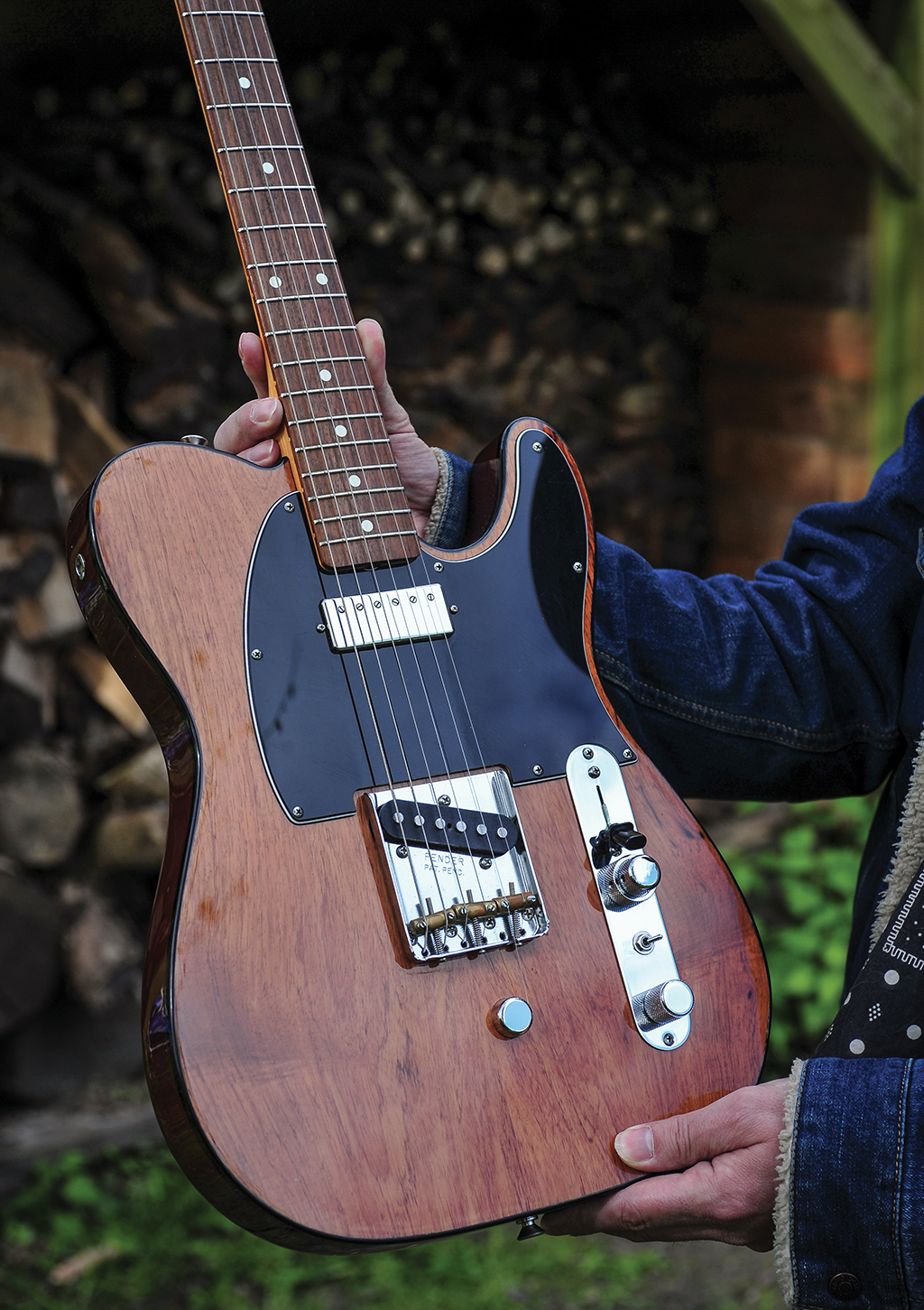
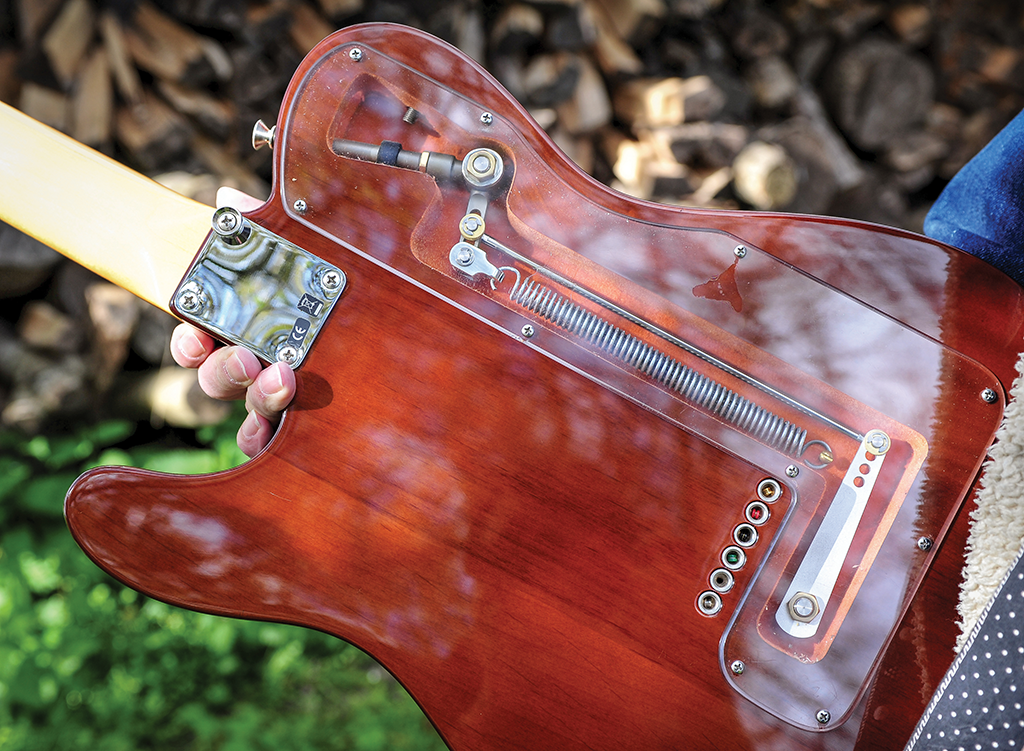
Ethan’s Mexican Tele with a Parsons B-Bender
“It’s a juggling act in many ways, but it’s brilliant because music is the language. We were talking about working on Tom Jones’ album the other day, and Andy Fairweather Low, Jeremy Stacey and Dave Bronze were in the room with Tom.
“We didn’t talk much about the way we were going to make that record, we played a lot. We showed up at the studio every day and picked up our instruments, that’s how we talked to each other, and the tape is running all the time.
It’s a great process, and Tom is a great singer and an interpreter, a really inspiring and cool guy. All three of the Tom Jones records have been great, and on the last record it’s all live with no overdubs [unless you hear a keyboard].
“It was a very organic process, which brought out the best in everyone. There’s a little bit of extra ‘special sauce’ on those records – you hear it and you feel it, you know?”
Q Let’s talk about your own records, especially Silver Liner…
“Silver Liner, in fact the last two albums, were written leading right up to the time we recorded. Jeremy Stacey was amazing on this album, he was the drummer, backing vocalist, engineer and producer.
“I stepped away completely from the production role and Jeremy did everything. You have to have trust and faith in someone else to steer the ship, because I don’t believe you can truly judge your own performances.
“We cut Silver Liner live to tape, and there’s a lot of first takes on this record. For me, I was just in the moment, and as open as I could possibly be during a take; responsive, yet at the same time putting out the feel that needed to be put out as a rhythm guitar player.

(l-r): Martin D-41, 00028 and 1969 D-18
“I played my 1969 Martin D-18 pretty much for the whole record – but on Six And Nine I used my ’73 D-28. For the electrics, I used my Gretsch White Falcon, a Strat and Jeremy’s early-70s Goldtop Deluxe, all through my old tweed Fender Harvard amp.
“One thing that’s important to say is, I’ve never stopped writing songs, I’ve been writing music and songs pretty much all my life. The desire to record and release those songs just hasn’t been present, until the key moment, when Laura Marling was listening to some of my tracks at the end of a session.
“She said, ‘that’s really lovely, come and sing it at Laura Marling And Friends at the Royal Festival Hall’. So, she got me up there, and I was reminded at that point about the circle of writing, performing, sharing, and that you’re missing a huge part of what it’s all about if you don’t sing them to people.”
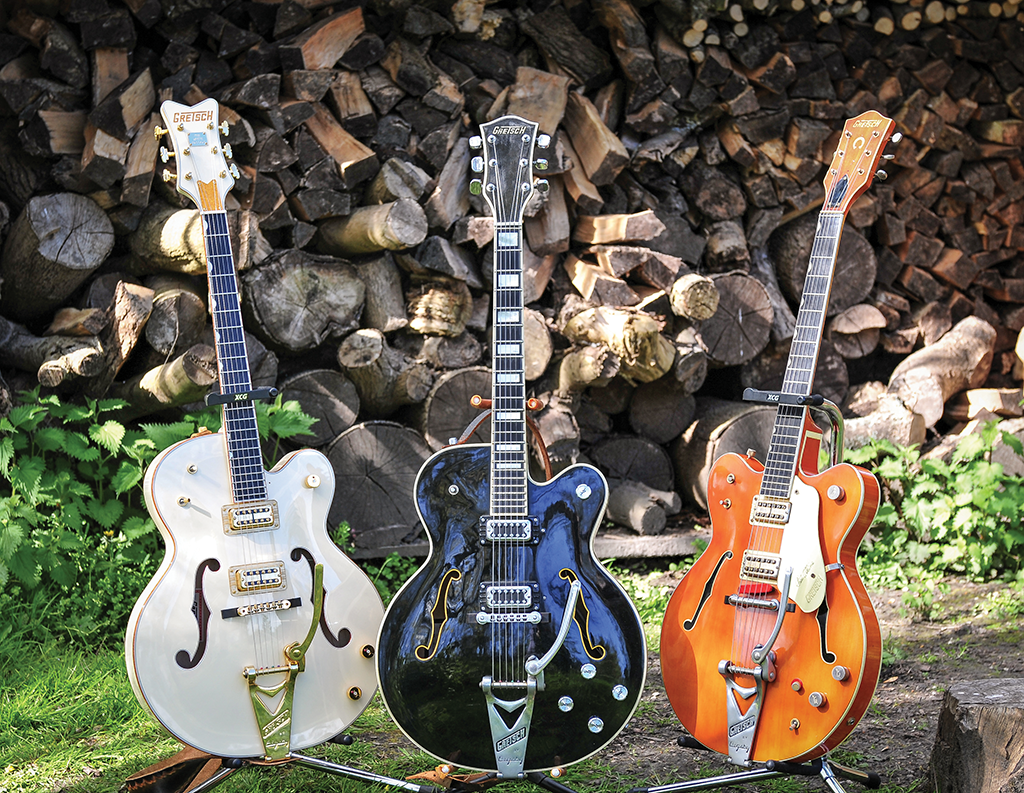
(l-r): Gretsch White Falcon, prototype Gretsch given to Ethan by Graham Nash, 1962 6120
Q So, how do you feel about being Ethan Johns the performer, as opposed to being an engineer, producer or musician with someone else?
“You know, that’s a really interesting observation, and I think the thing that prevented me doing it for all that time was that I really didn’t want that kind of attention.
“In fact, I know that was a big part of it, because I did have a band in the early 1990s, which ended up becoming Mike Peters’ band [The Poets Of Justice], but I didn’t enjoy it, and I didn’t like being the frontman at all, actually.
“Maybe I was worried about being judged. I’m a very honest musician, there’s no defence mechanism. I am who I am and I play what I play, so it’s very personal, and I think that when I was younger, the idea that some people may not like it was hurtful to me
“But now, I don’t care if people like it or not, and I know that sounds pretty harsh because nothing makes me happier than to connect with a room full of people, and that’s kind of the point for putting all this music out into the world.
“My whole deal is to improve. I want to keep getting better, because staying at home in isolation is incredibly restrictive. There’s no feedback, so you’ve got to get out there because it’s like a transfer of energy.”
Q Let’s talk about your collection of guitars and amplifiers…
“When I was five years old, I was gifted a Fender Bronco, and I still have it and have used it ‘high strung’ for many years – a great guitar! But the Bronco was three-quarter scale, and when I was about 13, I picked up a Hondo Les Paul.
“My dad could see I wanted something a bit more serious, so for Christmas he got me a really nice early Custom Shop Strat, one of the first ever made. This was before the first reissues came out, they had built a few of them to show Fender what a good idea it would be to reissue the old stuff.
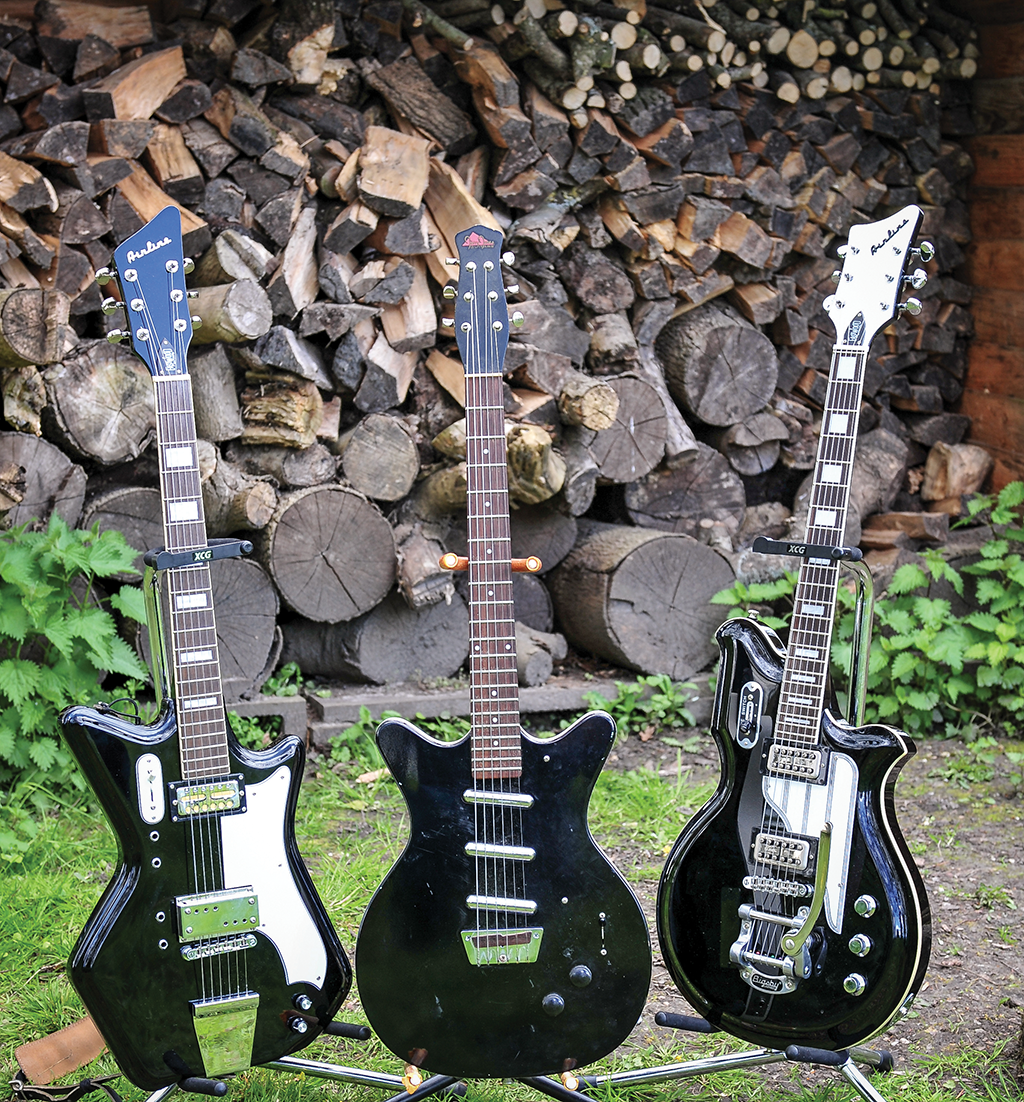
Airline (left) and Jerry Jones guitars
“It was a great guitar, but sadly it was stolen about 10 years ago. It was my first ‘proper’ guitar, and a gift from my dad, so it meant a lot to me. That Strat was my main guitar until I was about 21, and then I branched out into vintage Gretsch.
“I bought a 1962 Tennessean when I was about 17, which was a great guitar, then a ’58 Roundup, but eventually had to sell them. Then I bought a ’62 6120 Nashville, which I have used a lot, and still do today as it’s a great guitar. I also bought a 1919 Gibson harp guitar about the same time.
“Then I started to use a Fender Telecaster that my dad had bought in the 70s, which was reported to be a ’51. I started to use that quite regularly, and it turns out it’s got ‘January 1952’ pencilled on the neck, but parts of it are 1951 so it’s right on the cusp, it’s an amazing guitar!
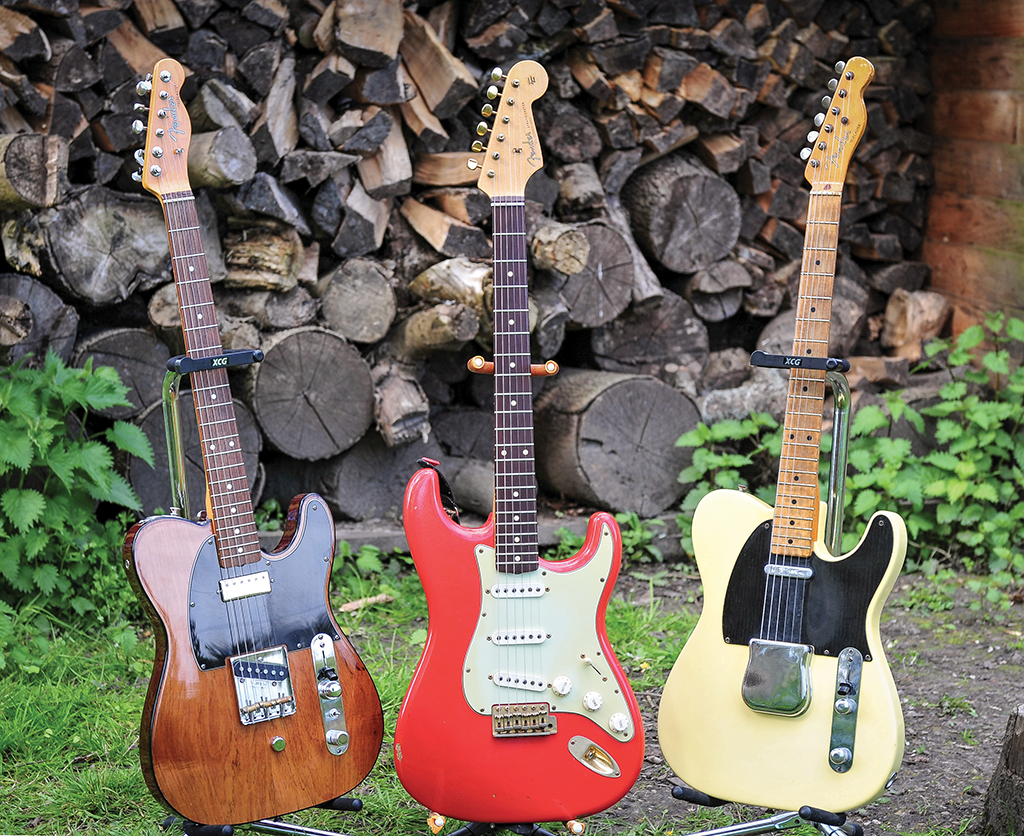
(l-r): Mexican Telecaster, Fiesta Red Custom Shop Strat, ’51/’52 Tele given to Ethan by his dad
“I was using it more and more, so eventually dad gave it to me, and I still use that Tele a lot. It’s one of the best guitars I’ve ever played, and I’ve played a lot of guitars over the years!
“It’s the ‘tone quest’. The more you get into tone chasing, the more you start to realise the sounds these guitars have in them. I struggled for so many years, I had to sell a lot of guitars.
“You know how it is; you go on tour, make a few quid and buy a vintage guitar. A few months later, you’ve run out of money and have to sell it again! I had a 1962 Mary Kaye Fender Jazzmaster that I bought in 1994, an amazing guitar, wrote a bunch of songs on it, you know? It was like there was a whole world of sounds in this guitar, completely unique and not like anything else.
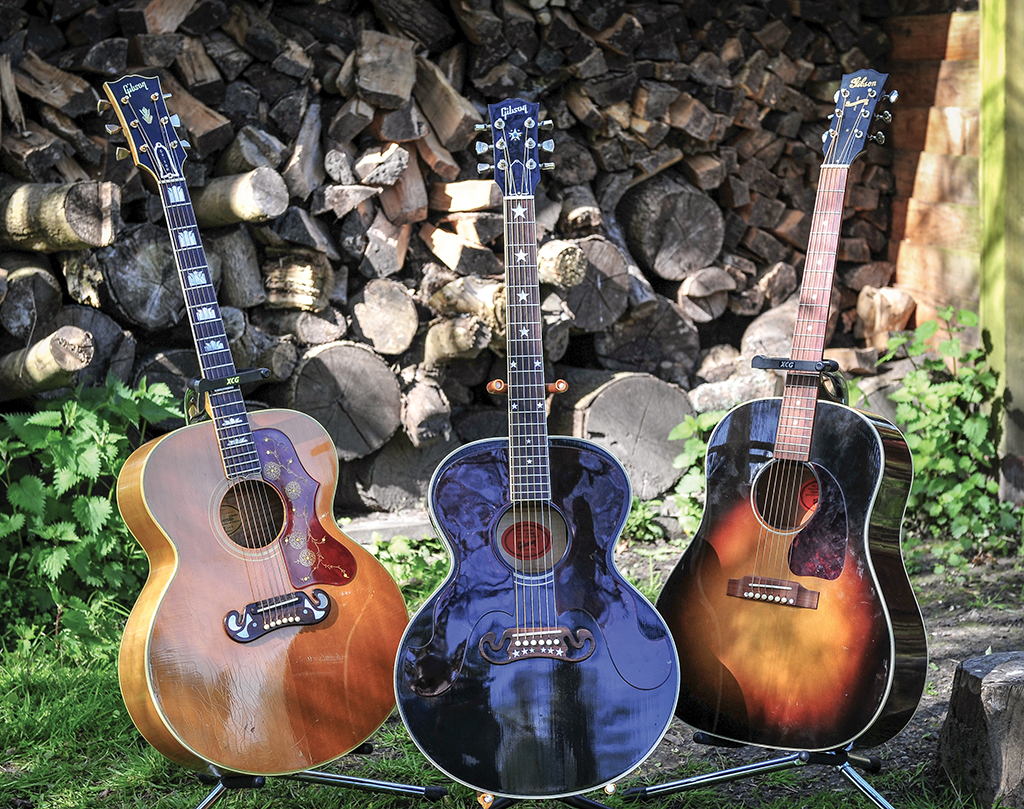
“I also had a Gibson J-160E at the same time, which was a pretty good guitar, but I sold it and bought a square-shouldered Hummingbird – but sold that as well. I had a 1965 blackface Fender Deluxe, too at that point, but it was stolen. A lot of great stuff I’ve either had to sell – or it’s been stolen.
“For me, rule number one is sound in the room; and that’s when the amp collection really began to grow, because I started to get into five watts, 10 watts, 15 watts, 22 watts – it depended on what you were doing. It became quite crucial to get the right tone, at the right volume. I don’t like to use pedals for tone, that’s the main thing, because it interferes with me communicating with the amp. Sound is all about your fingers, guitar choice and the amp.”
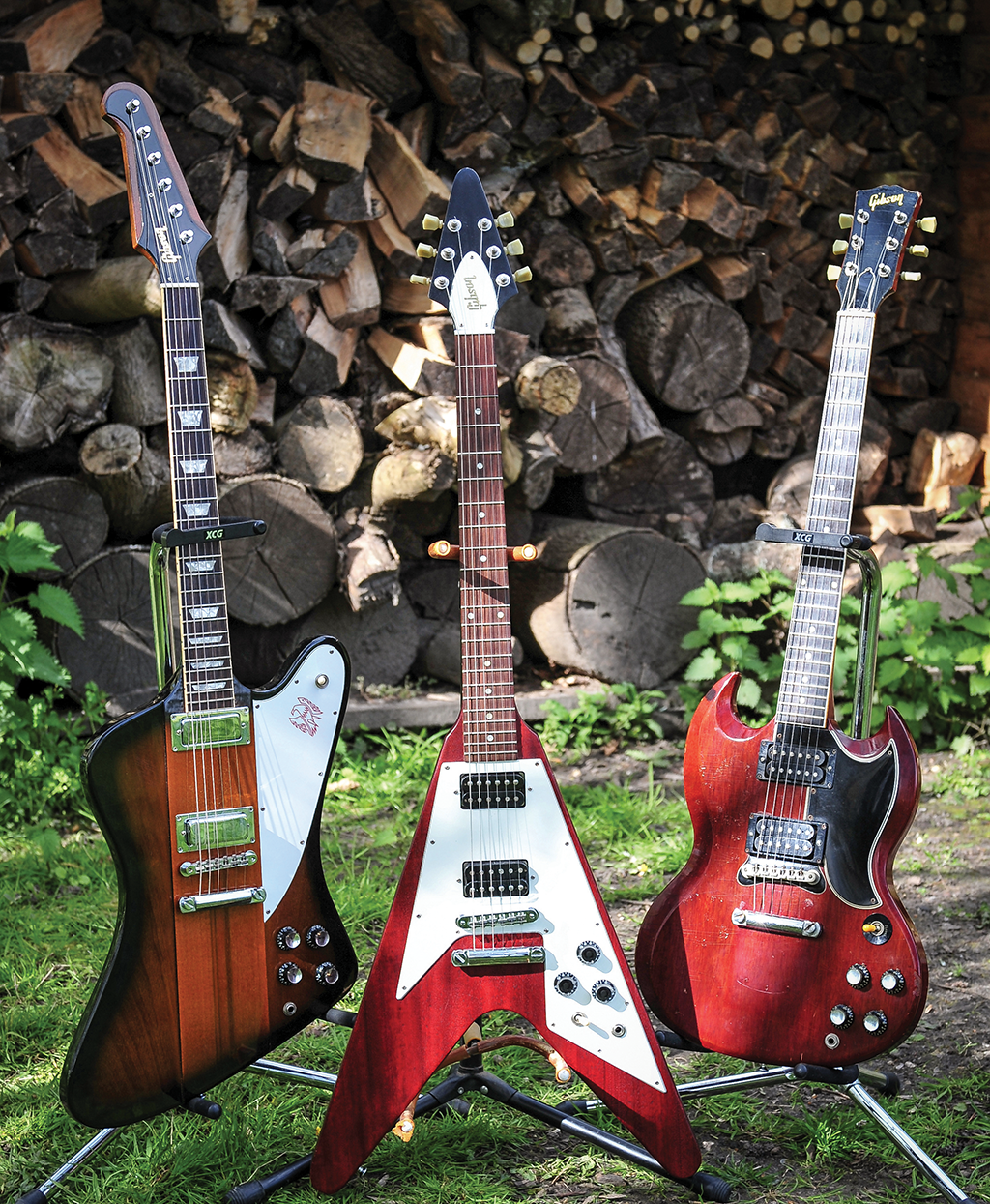
(l-r): 1990s Firebird, Flying V, 1963 SG
Q So, what’s in the future?
“I don’t really know. The bottom line is I’ve become a really useful record producer – as in, the more I do it the better I get, I think. So it would be silly to stop, because I’m good at it, you know? And I enjoy it.
“Making records, I mean how do I even begin to describe what that means to me? The opportunity to create something as extraordinary as an album, talk about being lucky enough to do something with your life! I’m never going to stop doing it, there’s no way.
“As long as I continue to be fortunate enough to have talented and inspired artists with something to say calling me up and asking me to help them, I’m going to keep doing it. I’ve got a busy festival and gigging season with my own band, The Black Eyed Dogs, and also The Jayhawks. I’m up to my eyes in stories and lyrics for a new album, so I’m busy writing – I’ve got a whole stack of material to get through!”
